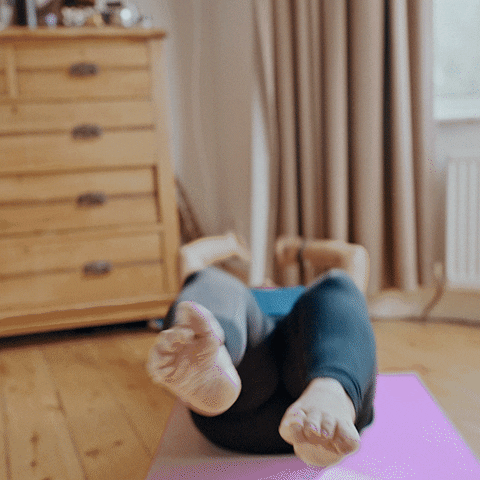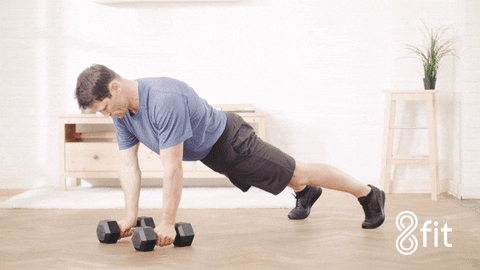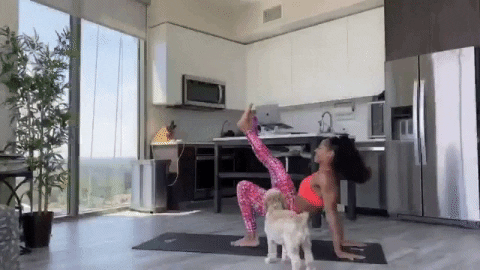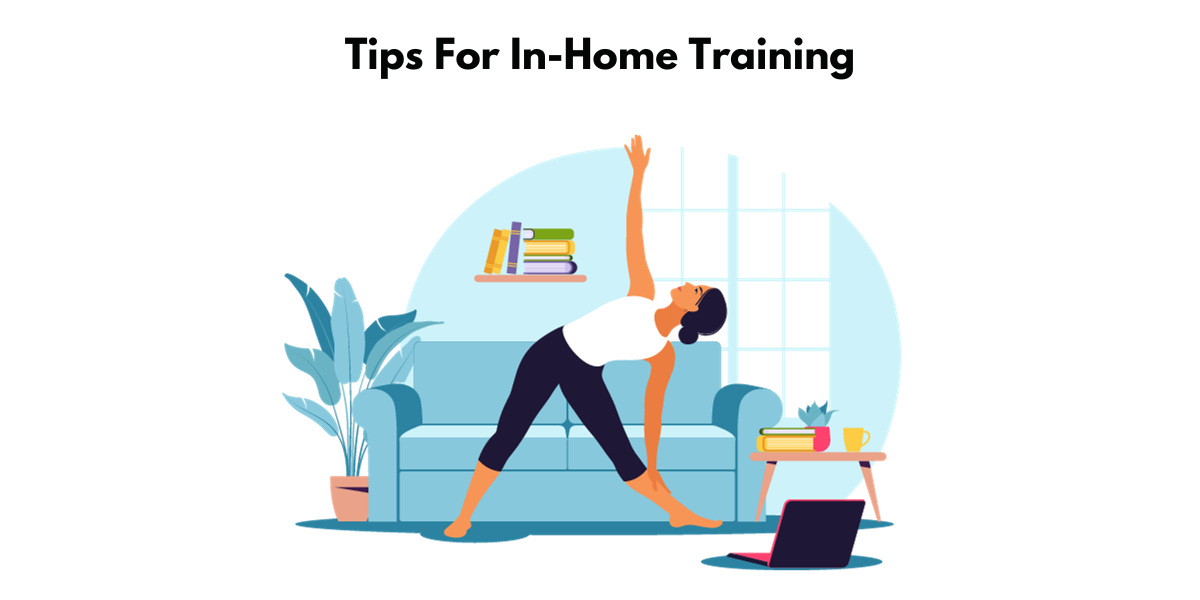In-Home Personal Trainer: How to Get a Home Gym for Fitness on the Go
Defining In-Home Personal Training
In-home personal training is a fitness initiative designed to bring the gym to you. With in-home personal training, professional trainers bring all the benefits of gym training to the comfort of your home. This flexibility means you can schedule your workouts conveniently without commuting to and from a gym. In essence, this program caters to your fitness level, goals, and training preferences.
Who is a Personal Trainer?
The role of a personal trainer
A personal trainer plays a crucial role in helping you achieve your fitness goals. They are fitness professionals who use their knowledge and expertise to guide clients towards a healthier lifestyle.
Instruction: Personal trainers instruct their clients on the appropriate techniques to perform various exercises, thereby minimizing the risk of injuries and maximizing results.
Motivation: Your personal trainer will keep you motivated and committed to your fitness goals, pushing you to perform at your best even when you might not feel like it.
Education: A significant part of a trainer’s job is to educate you about aspects of health and fitness. They provide information about nutrition, lifestyle changes, and exercise safety.
Accountability: Personal trainers hold their clients accountable. It’s their duty to ensure you adhere strictly to your planned workout routines and diet.
Personalized Programs: Trainers tailor workout routines to meet the personal needs, goals, and abilities of the client. This approach ensures optimal results for each individual.

Necessary certifications for a reliable personal trainer
It’s critical to ensure that your personal trainer holds the necessary certifications and qualifications to offer professional fitness guidance. Here are six popular personal trainer certifications:
- NSCA: National Strength and Conditioning Association. This certification focuses on strength and conditioning training techniques.
- ACSM: American College of Sports Medicine. This certification prepares trainers to work with individuals who have medical conditions.
- NASM: National Academy of Sports Medicine. NASM’s training approach is more holistic, offering programs covering nutrition, weight loss, injury prevention, and more.
- ACE: American Council on Exercise. An ACE certification ensures the trainer has knowledge in fitness instruction, health coaching, and personal training.
- NPTI: National Personal Training Institute. This certification is gained through a personal training school rather than a single test or class.
- CrossFit: This certification is ideal for trainers specializing in CrossFit coaching. However, the certification alone doesn’t guarantee excellence, as it’s typically completed in a single weekend.
Remember, while certifications can grant credibility, they don’t necessarily guarantee expertise or a good training experience. Some incredible trainers may not hold elite certifications yet can deliver excellent training sessions based on their experience and enthusiasm for helping clients achieve their goals.
Selecting the Perfect Trainer for You
Criteria for selecting an In-home personal trainer
Finding the right in-home personal trainer is a big decision, and several factors should be taken into account:
Certifications and Specialties: Verify that the trainer holds valid national certification and inquire if they have any additional specialties, which can be beneficial if you have specific goals in mind.
Experience: Ask how many years of experience the trainer has. Trainers with more years of experience are likely to have worked with a variety of clients and can handle different scenarios and needs better.
Approach to Fitness: Ensure that their views on health and fitness align with yours. Some trainers may focus heavily on weight loss, while others emphasize strength training, flexibility, or rehabilitating injuries.
Personality: A trainer’s personality can significantly impact your motivation. Some people do well with a trainer who pushes hard, while others prefer a more patient and supportive approach.
Rates and Schedule: Know your budget and find out how busy the trainer’s schedule is. You also need to know how far in advance you need to schedule sessions and whether there’s a cancellation policy.
References: Ask for references from previous clients. Speaking to past clients can provide insightful information about the trainer’s reliability and effectiveness.

Male or female trainer – how to decide?
The choice between a male or female personal trainer largely depends on personal preference and comfort level.
Consider the following factors when deciding:
Comfort Level: It’s crucial to feel comfortable with your trainer as you’ll be spending significant amounts of time together. If you feel more at ease with a particular gender for personal, cultural, or religious reasons, go for it.
Training Style: While it’s not universally true, some may find that certain training styles often vary between male and female trainers. Men are sometimes stereotyped as being more aggressive in their training techniques, whereas women are often seen as more nurturing and supportive. Consider what motivates you better.
Specialized Needs: If your goal is related to a gender-specific matter, like postnatal fitness or prostate health, it might matter to have a trainer who specializes in this, irrespective of gender.
Remember, competence and compatibility are more important criteria than the trainer’s gender. While gender considerations may influence your choice, effectiveness, and experience should be the top priority.
Essential Equipment for In-Home Training
The basic exercise equipment you need
Starting your at-home fitness program doesn’t require a fully-fledged home gym. Instead, investing in some essential, versatile pieces of equipment can offer you an effective full-body workout.
Here are some fundamental fitness gear you should consider:
Dumbbells: Dumbbells are incredibly versatile. They range from light to heavy weights, catering to various exercises and intensity levels.
Barbells or Body Bars: These are suitable for strength training and muscle building. Barbells can offer a variety of workouts like front squats, lunges, and bicep curls.
Resistance Bands: These flexible bands offer varying levels of resistance and are effective alternatives to weights for strength training.
Platforms: Platforms of varying heights are great for step-ups, jumps, or even as a bench substitute.
Kettlebells: Like dumbbells, kettlebells provide a broad range of exercises. Their unique shape gives them versatility for dynamic moves.
Stability Balls: Stability balls, or Swiss balls, are useful for core workouts and can double as a chair to engage your core throughout the day.
Bosu Balls: These half-ball devices are great for balance and stability training.
Mats: A good mat is essential for comfort and safety during floor exercises.
While these tools may seem basic, they are effective. Even if you’re training for functional weightlifting or corrective exercises, these weight ranges should serve you quite well. If you’re working with athletes or heavy weightlifters, more specialized equipment may be necessary.

Creative use of household items for exercise
Starting your in-home workout doesn’t necessarily require you to break the bank with brand-new equipment. There are clever ways to incorporate everyday household objects into your exercise routine. Here are a few ideas:
Stairs: If you have a staircase, you’ve got a built-in cardio machine. Simple stair climbing is a great exercise for your lower body. It works your core and improves cardiovascular health.
Chair: A sturdy chair can stand as a makeshift bench for tricep dips, incline push-ups, step-ups, and seated exercises.
Bottles and Cans: Filled water bottles or canned goods make excellent substitutes for dumbbells for light resistance training.
Towels: Besides mopping up your sweat, a towel can act as a sliding tool for ab exercises or even a resistance tool for isometric holds and pulls.
Books: A heavy book can serve as a weight for Russian twists or overhead presses.
Broomstick: This common household item is a perfect makeshift barbell to practice good form and posture for various exercises.
Remember, safety is paramount. Be sure any household items you use for your workouts are sturdy and safe.
Customize Your Exercises with Professional Assistance
Configuring the schedule that fits your lifestyle
Creating a workout schedule that fits your lifestyle can be the key to consistency and long-term fitness success. Here are some tips on how to configure your own:
Determine Your Available Time: Look at your schedule and honestly assess how many days and hours per week you can dedicate to working out. The amount of time will differ for everyone, but a good rule of thumb is to aim for at least 150 minutes of moderate aerobic activity or 75 minutes of vigorous activity per week.
Identify Your Prime Time: Are you a morning person or a night owl? Finding the time of day when you have the most energy can help ensure that you follow through with your workouts.
Plan for Variety: Ensure your workout week involves a mix of cardio, strength training, and flexibility exercises. This variety not only boosts overall fitness but can also prevent boredom and burnout.
Schedule in Rest days: Rest days are a crucial part of the scheduling process. They allow your body to recover and grow stronger. It’s ideal to take a rest day after every three days of workout.
Consider a Professional: A personal trainer can help develop schedules that fit perfectly into your lifestyle while meeting your fitness goals. They can be particularly helpful when it comes to creating efficient workouts that provide maximum results in the minimum amount of time.
Remember, consistency is vital in any fitness regimen, so tailor your workout schedule to your lifestyle, commitments, and personal preferences.

Nutrition and Meal planning tips for healthy living
Nutrition plays a pivotal role in supporting your training program and promoting healthy living. Here are some general nutrition and meal-planning tips:
Balanced Diet: Ensure your diet includes a balance of nutrients: proteins, carbohydrates, fats, vitamins, and minerals. An ideal meal should have a variety of colors from fruits and vegetables to lean protein, and whole-grain carbohydrates.
Timing is Everything: Remember to eat a light meal or snack loaded with protein and carbs before your workout for energy. After your workout, consume a protein-rich meal to aid muscle recovery.
Hydration: Proper hydration is essential, especially during workouts. Aim for at least 8 glasses of water per day, and more if you’re exercising intensely or in hot conditions.
Meal Prep: One of the keys to healthy eating is planning your meals ahead. This helps eliminate last-minute unhealthy, convenience food choices. Meal prep also likely saves both time and money.
Professional Assistance: Consult a nutrition coach or dietitian. They can help tailor a nutritious diet based on your individual needs, preferences, and fitness goals.
Remember, nutrition is not about short-term dieting but rather long-term lifestyle changes. Understanding the relationship between your diet and exercise is crucial to achieving your fitness goals and maintaining a healthy lifestyle.
Cost Aspect of In-Home Personal Training
Approximate costs of hiring an In-home personal trainer
The cost of an in-home personal trainer can vary significantly based on geographical location, personal trainer qualifications, and the length and frequency of sessions. However, here are some approximate costs to guide you:
The average rate for a personal trainer in North America is around $55 per hour [1].
At a higher-end commercial gym in a metropolitan area like NYC, prices may range as follows:
- 4 sessions per month: $95 per session = $380/month
- 8 sessions per month: $85 per session = $680/month
- 12 sessions per month: $79 per session = $948/month
If you prefer to have a personal trainer come to your home, the average cost could be approximately $65 for an hour session.
It’s also worth keeping in mind that some trainers may charge additional fees for travel or for bringing necessary training equipment to the home. As such, it’s essential to discuss all potential charges before agreeing to hire a trainer.

Is it worth the investment?
Deciding whether hiring an in-home personal trainer is worth the investment depends on your individual goals, needs, and budget. However, many individuals find that the personalized approach and one-on-one attention greatly enhance their fitness progress. Here are a few benefits you could realize from this investment:
Accountability: Paying a personal trainer adds a layer of financial commitment and can create accountability, which encourages adherence to exercise routines.
Safety and Effectiveness: A personal trainer can guide you through proper exercise techniques, ensuring you perform each move correctly and reducing the risk of injury.
Personalized Program: A trainer will create a fitness plan that’s specifically tailored to your needs and adjusts as you progress, making your workouts efficient and effective.
Expertise: Personal trainers have the knowledge to handle different body types, fitness levels, and aspirations.
Motivation and Coaching: Having someone to motivate and push you beyond your perceived limits can be exactly the boost needed to reach your fitness goals.
Based on feedback from numerous app users[2], many have found hiring a home personal trainer to be worth it for various reasons. They specifically cited the variety of workouts and convenience as significant benefits compared to a traditional gym membership[3].
However, it’s essential to consider this within the context of your personal budget, fitness needs, and motivation levels, as every individual is unique.
Ultimately, the primary goal in considering an in-home personal trainer should be whether their services can support you in achieving overall wellness and your specific fitness targets.
References: [1] National average rate of a personal trainer (2020). Payscale. [2] User feedback (2018). App Store Reviews. [3] Cost of gym membership vs. personal training session (2019). Compare Camps.
Pros and Cons of In-Home Training
In-home training boasts several benefits that cater directly to individual fitness needs. Some advantages include:
Convenience: With in-home training, you don’t have to deal with the hassle of commuting to and from a gym. An in-home trainer meets you at your convenience, so training can fit seamlessly into your schedule.
Customization: Your personal training program can be tailored to fit your fitness needs and goals. It can cover anything from weight loss and strength gain to cardio and core strength training.
Privacy and Comfort: Working out at home guarantees privacy. This is advantageous, particularly for beginners who may feel self-conscious in crowded gyms.
However, some potential downsides of in-home training can be:
Limited Equipment: Depending on the available home equipment, you may be limited to specific exercises. High-end gym machines may not be a practical home purchase.
Cost: Depending on the service, in-home personal training can be more expensive than a traditional gym membership.
Lack of Social Interaction: Gyms offer a social environment not replicated in a home setting.
By evaluating these pros and cons, you can decide whether in-home personal training is suitable for you.

Frequently Asked Questions
How often should I work out with my personal trainer?
The frequency of workouts with your personal trainer depends on various factors like your fitness level, goals, availability, and budget. If you’re new to exercising, you might start with one to three visits per week to establish an understanding and a routine.
Typically, training with your personal trainer 2-3 times per week is recommended, with additional workouts on your own. Consistency is key to achieving sustainable fitness results, and your personal trainer will help you maintain this consistency and motivate you on your fitness journey.
Remember, personal training is not a “get fit quick” strategy, but rather a long-term commitment. It may take months and months for you to find the right person to aid you in your journey.
Please consult with your personal trainer to figure out the perfect cadence for your workouts, keeping in mind your goals, budget, and overall wellness.
How do I know if my personal trainer is certified?
You can verify if your personal trainer is certified by directly asking them about their certifications. Reputable trainers should be open about their qualifications and willing to provide proof of their certification. Certification IDs or registration numbers may be utilized to confirm their status with the awarding organization.
The following agencies offer searchable databases to verify trainer certifications:
- NSCA (National Strength and Conditioning Association)
- ACSM (American College of Sports Medicine)
- NASM (National Academy of Sports Medicine)
- ACE (American Council on Exercise)
- NPTI (National Personal Training Institute)
Each agency has different validation methods, from online search portals to phone or email validation.
Remember, while certifications are an excellent place to start, they’re not the end-all-be-all of good personal training. It’s also crucial to consider the trainer’s experience, specializations, and the rapport that you build with them.
- In-Home Personal Trainer: How to Get a Home Gym for Fitness on the Go - December 21, 2023


